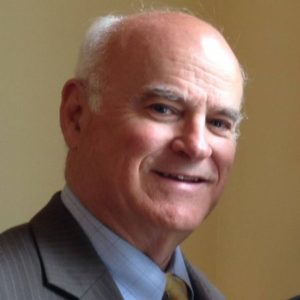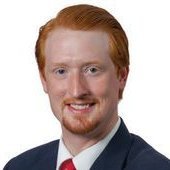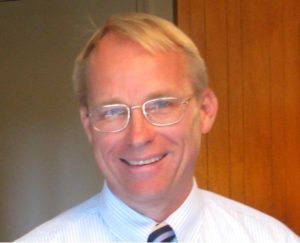According to Phi Delta Kappa (PDK), half of the nation’s public school teachers have seriously considered quitting in recent years, amid concerns about low pay, stress and lack of respect. This was reported in the latest PDK poll on public education.
“We’ve got a real crisis going on,” said Joshua P. Starr, CEO of PDK International, the teachers’ professional association for educators that conducts the annual poll. “There’s absolutely a real issue, and we have to confront it nationally if we want to ensure our kids are getting the best possible teachers.”
Executive Director of the South Carolina Education Oversight Committee, Melanie Barton, in an August 5th report titled “Policy Discussion on Preparation, Recruitment and Retention of Teachers” states that there is “irrefutable” evidence that “South Carolina’s preparation and retention of teachers, … foreshadow a growing public policy crisis.”
The Standard asked two SC leaders their opinion on the current public school crisis: Rep. Josiah Magnuson, R-District 38, and retired pastor E. Ray Moore, Chaplain Lt.Col., a former Lt. Gubernatorial candidate who heads Exodus Mandate, a group that urges parents to remove their students from public schools. And we spoke with one teacher we will call Jane who agreed to speak to us on condition of anonymity due to potential backlash. Jane is currently employed in the Lexington County School system.

Rev. Col. E. Ray Moore, USAR
Moore said, “The public teacher shortage and drop out problem is not simply due to low salaries, but primarily due to terrible working conditions for teachers.”
Magnuson commented “The problem is real – and it’s complicated. But I believe the answers are clear. South Carolina should take a three-pronged approach to recruit and retain teachers. We must make our teacher salaries competitive. We must open up alternative paths for teacher preparation, such as a mentorship approach, especially in lower-performing areas of the state. And we must ensure our teachers have suitable working conditions, including the ability to provide appropriate student discipline.”
The data Barton cites was compiled by the “Center for Educator Recruitment, Retention, and Advancement (CERRA) in its annual Educator Supply and Demand Report.” The report states:
- The number of individuals completing a teacher education program has declined by 32% since 2012-13.
- Approximately 7,300 teachers left their positions during or at the end of the 2017-18 school year, which is an increase of nearly 10% compared to the 2016-17 school year.
- Of these teachers, 27%reportedly went to teach in another South Carolina public school district, leaving more than 5,300 teachers no longer teaching.
- At the beginning of the 2017-18 school year there were 621 vacant teaching positions, which is a 13% increase over 2017-18 and a 29% increase compared to 2016-17.
- Excluding teachers who retired, 48% of all teachers in 2017-18 who left had five or fewer years of experience in a South Carolina public school classroom, and 17% had been teaching in South Carolina no more than one year.
- Of the first-year teachers hired in 2017-18, one out of four (25%) left their positions during or at the end of that school year and are no longer teaching in any SC public school. This percentage was 22% in 2016-17.
Barton cites another report by the Southern Regional Education Board (SREB) Teacher Preparation Commission which says that additional programs were needed. Barton suggests that teacher retention “likely will require additional funding.” Unfortunately, additional funding has not increased teacher retention nor quality academic results in the past.

Rep. Josiah Magnuson
Magnuson commented “the legislature has been hesitant to pursue what I believe is the best way to achieve all three prongs at once: robust school choice coupled with decentralized control. When local school districts compete for students, they will seek to provide teachers with the best possible conditions to teach, using funds in the classroom instead of on administrative staff or elaborate building projects. The state should also research whether current Federal education grants, testing, and data collection are worth their enormous compliance costs and the amount of local control they cede away; I think we will find many problems can be eliminated by ending Federal involvement. Hopefully, all these solutions will be carefully examined if the Senate addresses the House education reform bill next year.”
Teacher minimum pay was increased this year by 8.5% for newer teachers and an additional 4% for experienced teachers based on years served and educational attainment. Yet we still see an exodus from the classroom by teachers.
The PDK poll shows that school discipline is a problem. About “half of parents and two-thirds of teachers say school discipline is not strict enough.” One need only speak with those in the classroom to find a general disrespect for teacher authority and discord where unruly students disrupt classes.
The Standard asked, “could it have to do with disciplinary issues, school policies or other unknown sources?”

“Smart students can’t advance in the classroom, Jane said. She continued that she “used to give the smarter students more advanced work and books to read,” but said she is “not allowed to do this anymore.” Jane stated that “all kids must be doing the same work. As for slower kids I can’t give them less advanced work/books to meet them where they are and help them catch up. Smarter kids, average kids and slower kids have to always be doing the same work.”
Rev. Col. Moore said, “No real discipline is allowed in the classroom, so order is a perpetual problem. The teachers are harassed by the students, and their families, if they put any real demands on the students. The public school bureaucracy over works them too, so that teacher morale is a problem. Many are dropping out.”
The PDK poll continues that “Americans endorse the concept of zero tolerance, but offer less support when presented with practical application of such policies.” Zero tolerance policies typically sound good, but have been found to be problematic in many cases where innocent students face suspension, expulsion and even arrest.
Some of the incidents involved having prescription or over the counter drugs for sickness with the student, pocket knives or guns in the trunk of their car after early morning deer hunting, or having a Confederate Battle flag or even wearing Confederate Battle flag apparel.
PDK also found that most adults “prefer mediation over detention or suspension when dealing with student misbehavior.”
For the first time in 50 years most parents (54%) do not want their children to become a teacher. The Gallup polling organization first tracked attitudes about public schools and teachers. That first poll in 1969, showed 75% of parents favored their child becoming a school teacher.
Along with increases in teacher pay, the poll found that a majority of parents favor the teaching of civics and offering the Bible as an elective in public schools. The Gallup/PDK survey purports to measure Americans’ opinions of K-12 public schools in the U.S. and key issues facing public education in the country.
The perception of the general public is that the public school system is broken. That perception is driving parents toward private, charter and home schools where parents expect to see greater results.
“We urge Christian teachers to leave and go into the private Christian school system where they can freely teach the Bible, pray, use a Christian curriculum and share the Gospel of Christ,” Moore stated. “The public school system is not only undisciplined, but also pagan and humanistic in practice and design. No place for Christian children or Christian teachers.”
Michael Reed has served as a pastor, athletic coach, business consultant and editor of The Standard newspaper. He is available to consult or speak to your group.




 RSS - Posts
RSS - Posts
I spoke with a retired husband and wife both teachers with 20 plus years in the Beaufort County, S.C. school district.
They described the way the test scores were increased in their school district as the
M&M method. The teachers were given green and red M&M candy. The teacher then walks past the students as they take the standardized tests. The teacher then places a green M&M by the question with a correct answer marked on the students test. The teacher would place a red M&M beside the test question marked incorrect by the students taking the test. Problem solved.